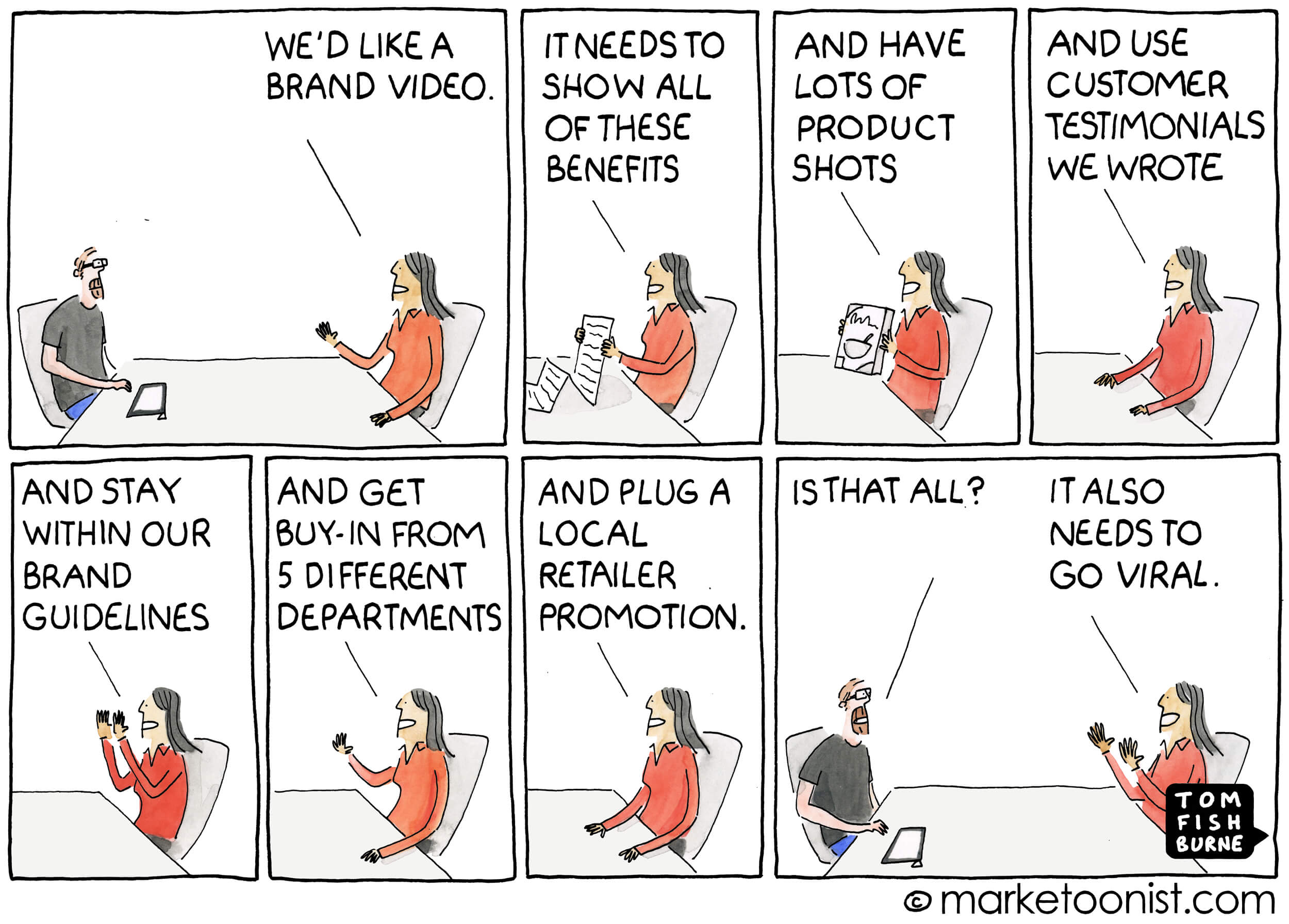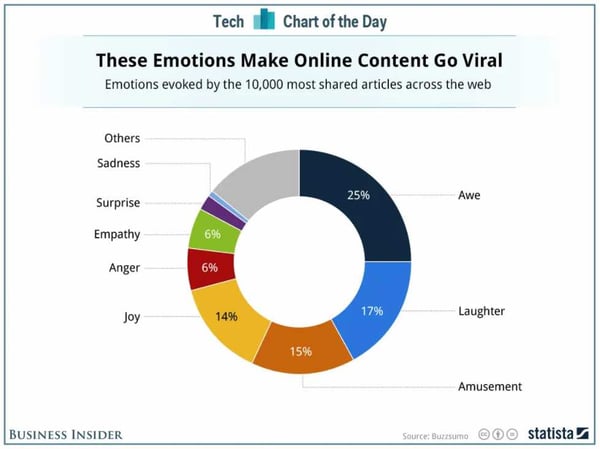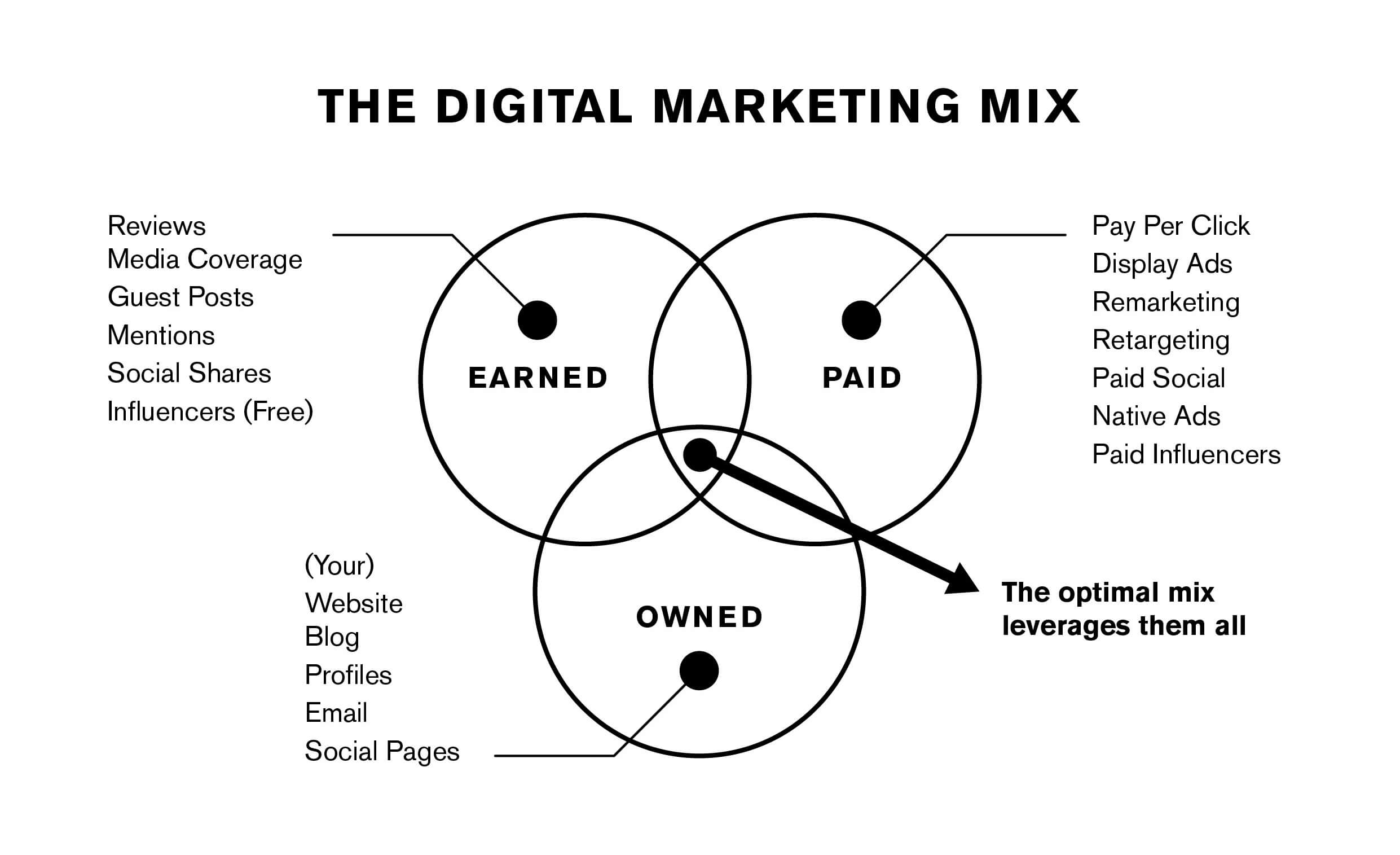Content 'going viral' is regarded by many as the Holy Grail of online marketing. The idea that you could create a piece of promotional material that will capture just the right combination of je ne sais quoi to be shared hundreds of thousands, or even millions of times with minimal spend. It’s a compelling idea, which is probably why it holds such sway.
At Casual Films, our marketing video production team has been asked countless times for videos to ‘be viral’ by various clients. It's not always that simple though. That’s not to say there aren't examples of incredible success in this area, but they tend to be more through an unreliable accident, or careful planning and execution and usually significant investment to help to give them a good push. We unpack how to make a marketing video that goes viral and share some tips along the way...

The Psychology of Viral Video
There are, of course, different levels of ‘viral’. While millions, or even billions, of views might be good for the ego, you may only need a few thousand of the ‘right’ people to see it to get the result you’re after. You will be better placed to create these campaigns if you understand the psychological effects that make your audience want to share your content.
There are a number of reasons for sharing behavior, each one driven by a small dopamine release in the brain. The larger the release, the more chance that the audience will share the content. Videos that drive this dopamine release awe, amuse, surprise, endear, shock, excite, disgust or trigger nostalgia. You can see Statista's analysis of the emotions that drive people to share content online here:

Beyond this, people share content for the following reasons:
- To connect over a shared interest.
- To help others with products and/or relevant advice.
- To boost their reputation.
- To look on trend/au fait with the latest events.
- To be involved in current trends/events.
- To make a statement about themselves.
- To be able to socialise offline.
- To promote a cause they believe in or want to be seen to believe in.
- To demonstrate their own knowledge or ability.
- To start an online conversation.
Related: Get everything you need to know about building brand awareness through video, in our Guide To Corporate Marketing Video Production.
What are the steps to Viral Video then?
So what should you include in your campaign to help it gain traction with your audience? Once you've understood your audience's psychology, there are a number of factors that are worth considering to give your campaign the best chance of runaway success:
1. Personality
Video's most powerful facet is its ability to communicate personality and emotion. Think about some of the most effective viral videos of all time; they all include a significant amount of human character. Build your creative treatment around a really engaging personality to help your audience to engage. Powerful personalities bring the message to life, whether you are sharing something touching — as in the Dove Real Beauty Sketches below — or humorous — as we can see in the fantastically successful launch video for Dollar Shave Club.
Related: The pandemic may have curbed our ability to meet in person, but you can still run online events with human character and warmth. Prevent “death by Zoom” and find out how brand video production (and other tips and tools) can help you create engaging online events, in this blog post.
Dollar Shave Club
One of the most famous and successful online promos of all time was the “Our Blades are F***ing Great” spot produced by Dollar Shave Club. The video features the founder and CEO walking through the company warehouse delivering an informative and hilarious piece to camera. Launched in March 2012, the video inspired over 12,000 orders on that first day alone and drove the successful launch of the company. Dollar Shave Club was acquired by Unilever for $1 billion just four years later.
This is a brilliant example of the power of product branding video in the Internet age. It was viral in the true sense of the world, and, at the time of writing, it has nearly 26 million views. Its budget of $4,500 is often touted as a reason for businesses to be extremely cost conscious in the video they produce. It’s not quite as simple as this, though. Michael Dubin, the founder, CEO and star of the video had spent years working in the marketing industry, and even had some acting and improv comedy experience. It’s estimated that to create a similar film, without this background or these skills, a company would need to spend around $40K. This is still a comparatively small amount next to the revenue and valuation it was able to drive.
From the outset, Dubin used his branding experience to make all of Dollar Shave Club’s products and marketing the perfect match for its target market. The ‘Blades’ video and the variety of other similarly themed content that it has shared over the years, sets the tone for a brand that people want to be a part of.
2. Think about the Audience
We really bang this drum a lot at Casual Films but the originals are often the best: tailor your marketing video content to your audience. Do the work to understand who they are, what they find interesting and what some of their cultural references are. This will help you to create content that resonates with them and which they're more likely to share. (You can learn more about identifying your audience in this blog post here).
Old Spice were particularly effective in nailing their audience targeting with their 2010 'The Man Your Man Could Smell Like' ad — featuring the rather dishy Isiah Mustafa. They realised that the majority of mens toiletries are bought by their partners. Armed with this, Mustafa's good looks and good amount of irreverent humour, they produced this hugely popular ad:
Old Spice — The Man Your Man Could Smell Like
3. Make the production extra ‘tight’
To stand the best chance, your videos need to be lean — shorn of any flab which will dampen the impact. Give the script, edit and sound design an extra pass through to make sure that only the most essential elements are there. People get bored easily. If you are going for barnstorming success (which you are), you don’t want any filler at all in there. This can be a lot harder than you would expect — particularly if there are a number of stakeholders feeding into the process.
4. Brand
Of course, if you are going to pay for it, it is important that the people who see it understand who made it. There is a deft tightrope to walk to not turn the audience off by being too brand or sales-heavy. This is certainly not the time for an overt sales pitch or product branding video. It's more a time for you to share something which your audience will feel aligns with their worldview and values. This is something that Dove gets absolutely on the button with this touching spot which reflects their concept of purity, perfectly.
Dove Real Beauty Sketches
The Allianz #MyCarStory
Brief
Our brief was to revitalise the ongoing #MyCarStory campaign that had just launched as a TV campaign. The campaign contained content around sporting events, as Allianz sponsors many sport associations, including Formula One and the British Paralympic Association. Allianz wanted new video content that would resonate with their online audience, especially female viewers. Our challenge was to come up with a cost-effective way to produce multiple pieces of content that featured interesting contributors.
Target Audience
The target audience for this campaign was female viewers on YouTube and Facebook.
Idea
Our idea was to get two car-owning families to share unfiltered memories of their special journeys. We filmed three unscripted stories with each family, allowing natural conversations, emotions and opinions to flow freely. The stories were captured from different angles on in-car camera rigs as the families drove around the area associated with their memory. Each story was cut into a 60-second video and shared as an individual film across Facebook and YouTube.
Creative Execution
After speaking to over 20 potential sets of contributors, we cast two families: The Hamers and The Kirks. The greatest challenge in the creative execution wasn’t rigging the cars with GoPros, but recording sound on a loop so that the Director, following in the car behind, could speak directly to the family. The Director and Producer team would encourage the families in real-time to discuss certain topics, redo takes and generally direct them remotely.
Results
Over the course of the five week campaign these films were viewed by over 2.5 million people. Approximately 1.5 million of those views were in the first few weeks alone.
The film was able to effectively engage the core audience of female viewers. A majority of the 67 comments left on The Hamer's ‘Labour’ video posted on Facebook were from mums sharing their own labour stories. ‘Flying the Nest’ was also popular amongst female Facebook users who commented about their own families. The films posted to Allianz UK’s YouTube channel also performed exceptionally well, garnering an ‘off the scale’ view completion rate of 88%. The traffic to these films was also completely organic, shooting the series to the top of the channel’s most viewed content.
“The results are some of the best that the YouTube team at Google have ever seen… The videos’ view completion rate of 88% is ‘off the scale’.” — YouTube
5. Marketing — be prepared to give your content a 'push'
No matter how good your content is — and by now I'm sure it's incredible — it's vanishingly unlikely that it will be picked up and shared widely if you don't invest to get it seen by the right audience. There are a number of different channels you can use to share your content. These include: owned media, earned media and paid media. Then you can also leverage Programmatic Marketing (a form of paid media) and Dynamic Content Optimisation (DCO, and a form of Programmatic Marketing).
 Owned media
Owned media
These are all the channels for which you own the control. They include your website, social pages, intranet and internal staff communications. The information here is what your brand says and what people say to you. Around 90% of online conversations about brands do not take place on their own pages. This means you have to get out there to influence these conversations.
Earned media
Your earned media are shares of your content, and articles and blog posts written about your channels. This is what people say about you. You earn views here by creating content that people want to engage with and share.
Paid media
Your paid channels are, unsurprisingly, the ones you have to pay for. They include paid posts, traditional advertising and programmatic marketing...
Programmatic Marketing
This is using software to buy advertising space in real time. This has made a process that used to take a significant amount of time almost instantaneous. This is useful to you because it allows you to accurately target your audience with your content. It’s successful because it’s efficient and it reduces the amount of money that gets spent on showing content to the wrong people.
The system also allows you to continually optimise the targeting, so that it improves over time. It also allows different types of content to be shown to a specific viewer, depending on which pieces of content they have watched or interacted with in the past.
It’s not perfect, though. There have been a number of scandals which have led to major advertisers reducing ad spend from YouTube as it emerged that the platform had displayed their commercials alongside distasteful content. There have also been questions around ad fraud and the amount of budget that goes into showing content to bots.
Dynamic creative optimisation (DCO)
Another element of programmatic marketing is dynamic creative optimisation or DCO. This takes the same understanding of the audience that programmatic retargeting does but uses it to serve content that is optimised to engage them. For example, there are two people who are interested in buying a car. One is a successful, single woman in her 30s, and the other is a father of three in his 40s. DCO would allow the same company to advertise directly to them both, with content that is designed to pique their interest. It could do this by serving the woman an ad for a two-seater convertible and the father an ad for a people carrier. This makes the content far more effective, and it’s a step towards the full personalisation of marketing.
6. Post effectively
The way that you upload and label your content can play a significant part in the how successful it is online. This will define whether people find it and click on it in the first place. While these are not going to save a project that has gone awry they can really help you to improve your video's engagement rate.
i. Make thumbnail image perfect
First impressions count. The first thing your audience will see is the title and thumbnail, so they are almost more important than the content itself. This means they need to be eye-catching. Generally images with people in them get better response rates than those without. It is also useful to add the title onto the thumbnail so that the viewer can quickly see what your video is about.
ii. The name should be impactful, and match what people are looking for
For example, ‘How to Change a Road Bike Tyre’ or, ‘Change Bike Tyres Like a Pro’ is going to get a lot more hits than ‘tyre_ video_ final_ v.5’. This raises another point. The title that you use in production should be changed before you share the video. It looks really sloppy, and it's not searchable or clickable.
Final Final v.2
Another point you may already be aware of is never to call an output ‘final’, ‘finished’, ‘last output’, etc. I’m not particularly superstitious, but I know that there is a powerful natural force that strikes down such hubris with previously unseen, time-consuming errors. In the thousands of films we have made, and the tens of thousands of different edits that have been output, I am not aware of a single ‘final’ version that ended up being that.
iii. Don't share clickbait — the name must reflect the content of the film
If your audience can’t find it because the name is too obscure, or if they do watch it but find that the title has misled them, they will let you and other users know about it. You don’t want to get a load of negative reviews because your audience feels like you’ve duped them.
iv. A/B Testing
Just as you can optimise the content of your videos, so you must optimise the title and thumbnail. You must see which combination is the most effective at engaging your target audience. A/B testing entails sharing two or more different concepts, titles or images, and then judging which is the most effective. You do this by reviewing the responses you get from your chosen audience. For example, you may find that when you use the title, ‘Top 5 Ways to Target the Tech-Savvy Grads with Video’ you get a better response than when you use ‘Recruiting Tech Grads – A Guide to Video’.
If you are interested in discussing a campaign, a video, or even just want a little guidance on anything video related, our experienced corporate marketing video production team is on hand to help. Drop us a message here and one of them will get straight back to you.



.svg)
